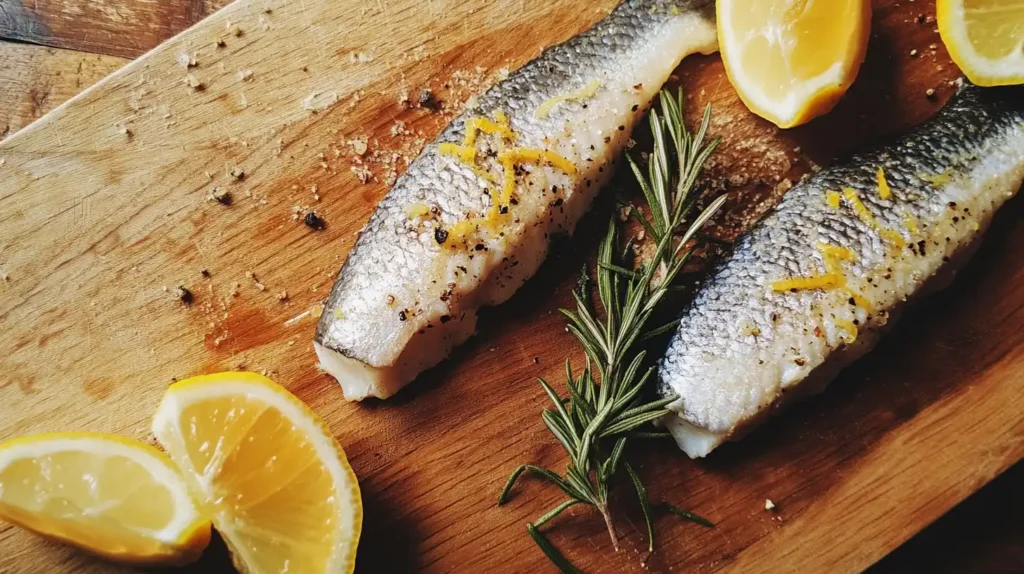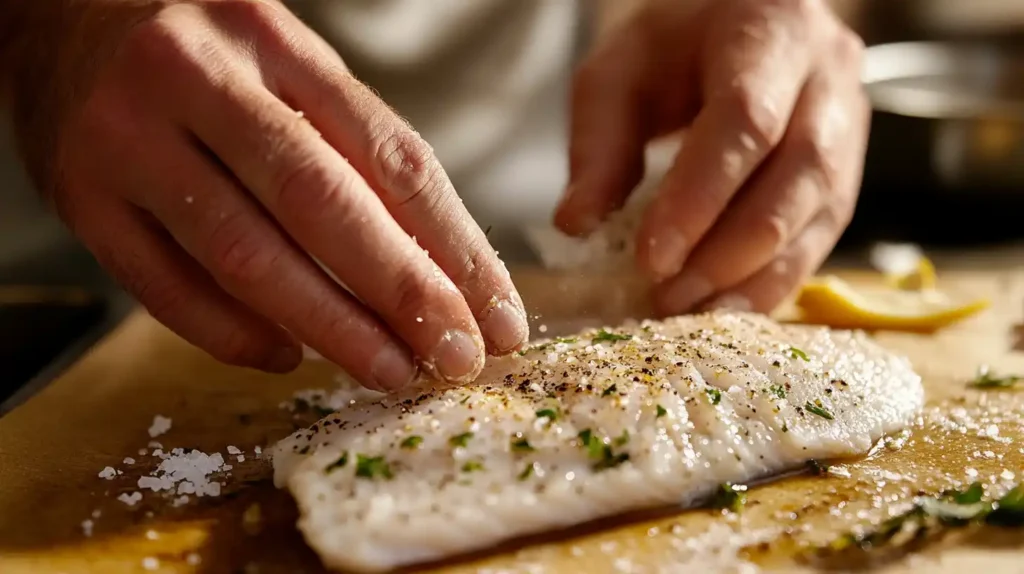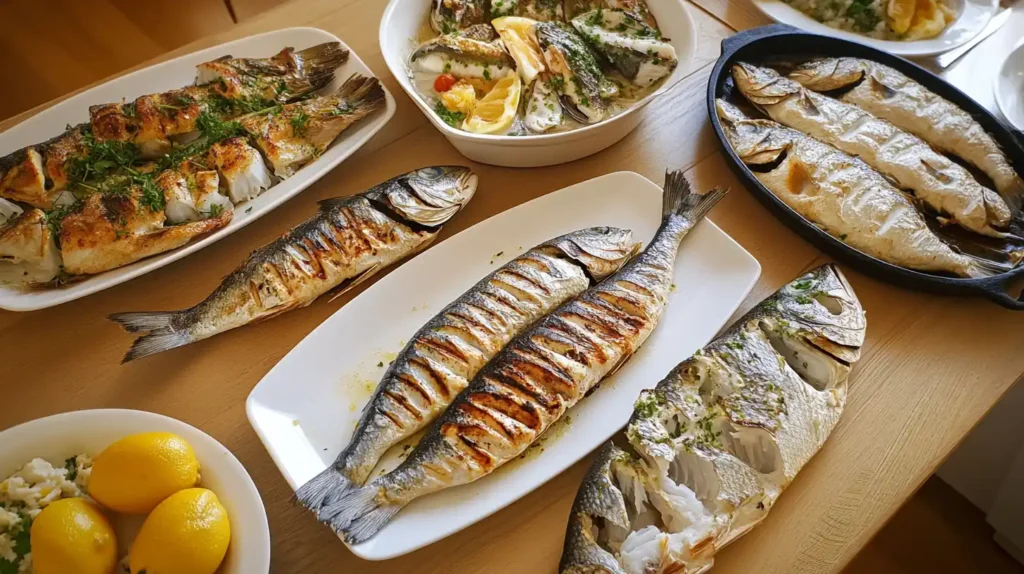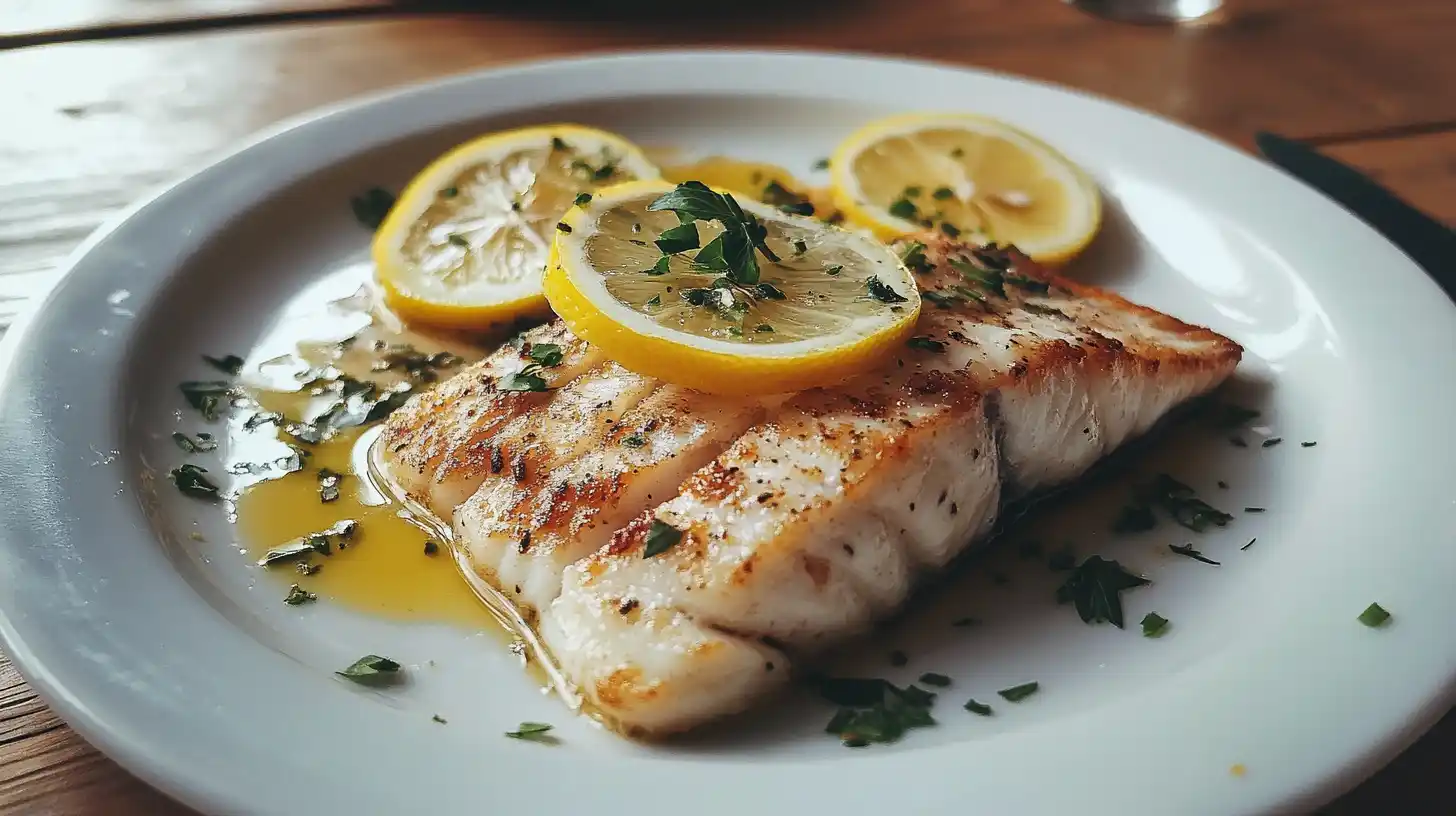Fish is one of the most delicious and nutritious proteins, making it a staple in many cuisines worldwide. But what is the tastiest way to cook fish? With so many cooking methods available, choosing the right one can make a huge difference in flavor and texture.
Whether you love crispy pan-fried fish, flaky baked fillets, or succulent grilled seafood, this guide will help you discover the best techniques to make fish taste amazing. Plus, if you’re interested in learning more about different seafood options, check out everything you need to know about seafood mix, which includes a variety of delicious seafood choices perfect for cooking.
Table of contents

Choosing the Best Fish for Cooking (How to Cook Fish, Delicious Fish Cooking Methods)
Before you cook fish, you need to pick the right one. The type of fish you choose affects its taste, texture, and cooking method. Here are a few key things to consider:
White Fish vs. Oily Fish: Which One Tastes Better? (Tasty Fish Cooking Techniques)
- White fish (cod, tilapia, halibut, haddock) has a mild taste. It absorbs marinades and seasonings well, making it great for baking, frying, or steaming.
- Oily fish (salmon, mackerel, trout, sardines) has a richer flavor. It contains more natural fats, making it perfect for grilling or roasting.
Fresh vs. Frozen Fish: Does It Matter? (Flavorful Fish Recipes)
- Fresh fish is best when it has a firm texture, clear eyes, and no strong smell. However, it is not always available or affordable.
- Frozen fish can be just as good if properly thawed. To keep the texture, thaw it in the fridge overnight instead of using the microwave or warm water.
Sustainable Fish Choices: Why It’s Important (Best Way to Cook Fish)
- Choosing wild-caught or responsibly farmed fish helps protect the oceans.
- Look for certifications like MSC (Marine Stewardship Council) or ASC (Aquaculture Stewardship Council) on packaging.
The fish you choose makes a big difference in flavor. Now that you know how to pick the best fish, would you like to move on to the next section about the tastiest ways to cook fish or skip to a specific cooking method?
The Tastiest Ways to Cook Fish (Delicious Fish Cooking Methods, How to Cook Fish)
Cooking fish the right way can make a huge difference in flavor, texture, and enjoyment. Whether you prefer a crispy, golden crust, a tender and flaky bite, or a rich, smoky taste, the right cooking method can enhance the natural flavors of fish and make your meal unforgettable.
There are many ways to cook fish, but some methods are tastier than others. Factors such as heat level, cooking time, and seasonings play an important role in how fish tastes. For example, pan-frying creates a crispy exterior, while baking locks in moisture and enhances flavors. On the other hand, grilling gives fish a smoky depth, and steaming keeps it delicate and juicy.
If you are wondering what is the tastiest way to cook fish, the answer depends on personal preference and the type of fish you are cooking. Some fish, like salmon and tuna, taste amazing when grilled, while tilapia and cod shine when pan-fried or baked.
If you love rich and flavorful seafood, try incorporating ingredients like butter and fresh herbs for an even better taste. Want to explore more about nutrient-rich seafood options? Check out salmon belly benefits you didn’t know about.

2. Baking Fish for a Healthy & Delicious Meal (Delicious Fish Cooking Methods) Meal
Baking is one of the tastiest and healthiest ways to cook fish. It allows the fish to cook evenly and gently, preserving its natural moisture while enhancing its flavor. This method requires minimal oil, making it a great option for those looking for a nutritious and delicious meal.
One of the best things about baking fish is its versatility. You can season it with simple ingredients like lemon and herbs or create more complex flavors using marinades, spices, and sauces. Additionally, baking works well for both delicate fillets and whole fish, ensuring you get a tender and flavorful result every time.
Why Baked Fish Tastes So Good
Baking brings out the best natural flavors of fish while keeping it juicy. Here are some reasons why baking is one of the tastiest ways to cook fish:
- Locks in moisture – Unlike frying or grilling, baking keeps the fish tender and prevents it from drying out.
- Enhances flavor – The slow, even heat allows the fish to absorb seasonings and marinades deeply.
- Hands-off cooking – Once in the oven, there’s no need for constant flipping or stirring.
- Less oil, more health benefits – Baking requires very little oil, making it a great choice for a balanced diet.
How to Bake Fish Without Drying It Out
To get the best results, follow these steps for perfectly baked fish:
- Preheat the oven to 375°F (190°C). This ensures even cooking without drying out the fish.
- Line a baking dish with parchment paper or foil to prevent sticking and make cleanup easier.
- Prepare the fish by patting it dry with a paper towel. This helps seasonings stick better.
- Season the fish with salt, pepper, garlic, lemon juice, and fresh herbs for a fresh and flavorful taste.
- Drizzle a small amount of olive oil or butter over the fish to enhance richness.
- Bake for 12–15 minutes, depending on the thickness of the fillet. A general rule is 10 minutes per inch of thickness.
- Check for doneness by inserting a fork into the thickest part of the fish. It should flake easily and appear opaque.
Best Fish for Baking
Some fish varieties work better than others for baking. The following types hold up well and absorb flavors beautifully:
- Cod – Mild, flaky, and pairs well with citrus and herbs.
- Haddock – Slightly sweeter than cod, great with butter and lemon.
- Salmon – Rich and flavorful, perfect for marinades and spice rubs.
- Halibut – Firm and meaty, excellent for baking with Mediterranean flavors.
- Snapper – Ideal for whole fish recipes, works well with garlic and rosemary.
Best Seasonings and Marinades for Baked Fish
One of the best things about baked fish is how well it absorbs flavors. Here are some tasty seasoning ideas:
- Classic Lemon & Herb – Olive oil, lemon juice, garlic, parsley, and thyme.
- Garlic Butter – Melted butter, minced garlic, paprika, and a touch of cayenne pepper.
- Mediterranean Style – Olive oil, tomatoes, olives, capers, and oregano.
- Spicy Cajun – Cajun seasoning, garlic powder, black pepper, and smoked paprika.
- Asian-Inspired Glaze – Soy sauce, honey, ginger, sesame oil, and lime juice.
Pro Tips for Baking the Tastiest Fish
- Use parchment paper or foil packets – Wrapping the fish in parchment or foil helps lock in moisture and infuse flavors.
- Let the fish rest for a few minutes – This helps the juices redistribute, making the fish even more tender.
- Don’t overcook – Fish continues to cook slightly after being removed from the oven, so take it out once it reaches 145°F (63°C).
Delicious Baked Fish Recipe to Try
For a simple and delicious baked fish dish, try this easy recipe:
Garlic Butter Baked Salmon
Ingredients:
- 2 salmon fillets
- 2 tablespoons melted butter
- 3 cloves garlic, minced
- 1 tablespoon lemon juice
- 1 teaspoon dried oregano
- Salt and pepper to taste
Instructions:
- Preheat the oven to 375°F (190°C).
- Place the salmon fillets in a baking dish lined with parchment paper.
- Mix the melted butter, garlic, lemon juice, oregano, salt, and pepper.
- Drizzle the mixture over the salmon.
- Bake for 12–15 minutes until the salmon flakes easily with a fork.
- Serve with a side of roasted vegetables or rice.
3. Grilling Fish for a Smoky, Charred Taste (Tasty Fish Cooking Techniques)
Grilling adds deep flavor and a slight char to fish, making it one of the most delicious ways to cook seafood. However, since fish is delicate, it needs careful handling.
How to Grill Fish Without Sticking
- Preheat the grill to medium-high heat.
- Lightly oil the grill grates to prevent the fish from sticking.
- Marinate the fish in olive oil, citrus juice, and herbs for added flavor.
- Grill for 4–5 minutes per side, flipping only once.
Grilling works best for salmon, tuna steaks, and swordfish. It is also great for whole fish like snapper or sea bass.
4. Steaming Fish for a Moist and Tender Texture (Flavorful Fish Recipes)
Steaming is one of the healthiest ways to cook fish. It keeps the fish moist, soft, and full of natural flavors.
How to Steam Fish Properly
- Use a bamboo steamer, steaming basket, or a pot with a lid.
- Add water, but do not let it touch the fish.
- Season fish with garlic, ginger, or herbs for extra taste.
- Steam for 6–10 minutes, depending on thickness.
Steaming is ideal for tilapia, cod, trout, and flounder. It is also great for making Asian-style dishes with soy sauce and scallions.
5. Poaching Fish for a Soft and Juicy Bite (How to Cook Fish)
Poaching is a gentle way to cook fish. It keeps the fillet tender, juicy, and full of flavor without needing oil.
How to Poach Fish Without Overcooking
- Heat a pot with broth, wine, or coconut milk.
- Bring to a gentle simmer, not a boil.
- Add the fish and cook for 5–10 minutes.
- Remove carefully to keep the fillet from falling apart.
Poaching is perfect for salmon, halibut, bass, and sole. It is also great for making light, flavorful seafood dishes.
Frequently Asked Questions About Baking Fish
1. How long should I bake fish?
The general rule is to bake fish for 10 minutes per inch of thickness at 375°F (190°C). Most fillets take 12–15 minutes, while thicker cuts or whole fish may need 20–25 minutes. Always check for doneness by inserting a fork if the fish flakes easily, it is ready.
2. What temperature is best for baking fish?
The best temperature for baking fish is between 350°F (175°C) and 400°F (200°C).
- 350°F – 375°F: Best for delicate white fish like cod or haddock, keeping them moist.
- 400°F: Works well for meaty fish like salmon or halibut, creating a slightly crispier texture.
3. How do I keep baked fish from drying out?
- Do not overcook—remove the fish once it reaches 145°F (63°C).
- Use parchment paper or foil to seal in moisture.
- Add a marinade or butter to keep the fish moist while baking.
4. Can I bake frozen fish without thawing it?
Yes, you can bake frozen fish, but you will need to increase the baking time by 5–10 minutes. To ensure even cooking:
- Preheat the oven to 400°F (200°C).
- Rinse the frozen fillet under cold water to remove any ice.
- Place it on a baking dish, season, and bake for 20–25 minutes.
- Check for doneness using a fork the fish should flake easily.
5. What is the best fish to bake?
Fish that holds up well in the oven includes:
- Salmon – Rich and flavorful, works well with marinades.
- Cod – Mild and flaky, great for absorbing flavors.
- Halibut – Firm and meaty, excellent for Mediterranean-style dishes.
- Tilapia – A budget-friendly option with a mild taste.
6. Do I need to flip fish when baking?
No, flipping is not necessary. Baking fish allows it to cook evenly on both sides without turning. If you want a crispier texture, you can broil it for the last 2–3 minutes.
7. Can I bake fish in an air fryer?
Yes, baking fish in an air fryer is a great way to get a crispy finish with less oil. Set the air fryer to 375°F (190°C) and cook for 10–12 minutes, depending on thickness.
8. Should I cover fish with foil while baking?
Covering fish with foil helps lock in moisture, making it a great option for delicate fillets like tilapia and cod. However, for a crispy top, bake uncovered or remove the foil for the last few minutes.
9. What seasonings go best with baked fish?
The best seasonings for baked fish include:
- Lemon & Herbs – Fresh and zesty, great for light, flaky fish.
- Garlic Butter – Rich and savory, perfect for salmon.
- Mediterranean Style – Olive oil, tomatoes, capers, and oregano.
- Spicy Cajun – A bold blend of paprika, garlic, and cayenne pepper.
10. Can I bake fish with vegetables?
Yes, baking fish with vegetables is an easy way to create a one-pan meal. Good vegetable pairings include:
- Asparagus, cherry tomatoes, and zucchini – Light and fresh flavors.
- Potatoes, bell peppers, and carrots – Hearty vegetables that roast well.
- Broccoli and green beans – Quick-cooking options that complement any fish dish.

Conclusion
The tastiest way to cook fish depends on your personal preference and the type of fish you are using. If you love a crispy, golden crust, pan-frying is the best option. For a soft and juicy texture, baking is an excellent choice. If you enjoy a smoky, charred taste, grilling is perfect. On the other hand, if you prefer a light and delicate flavor, steaming or poaching may be the best methods.
No matter which method you choose, the key to cooking delicious fish is to:
- Select the right fish – Fresh fish with a firm texture will give you the best results.
- Use proper seasonings – Herbs, citrus, and spices enhance the natural flavor of fish.
- Avoid overcooking – Fish should be moist and flaky, not dry.
If you are new to cooking fish, start with a simple baked or pan-fried recipe, and experiment with different seasonings. As you gain confidence, you can try more advanced techniques like grilling or steaming whole fish.
Ultimately, the best way to cook fish is the one that suits your taste, fits your lifestyle, and brings out the best flavors. Now that you know how to prepare fish in the most delicious ways, it’s time to choose your favorite method and enjoy a tasty, healthy meal!

